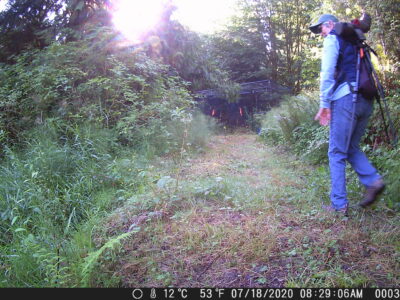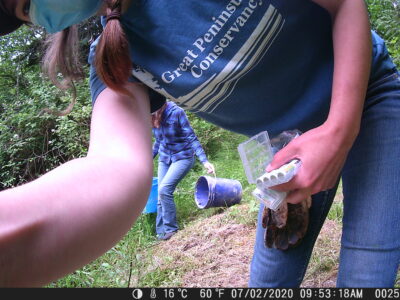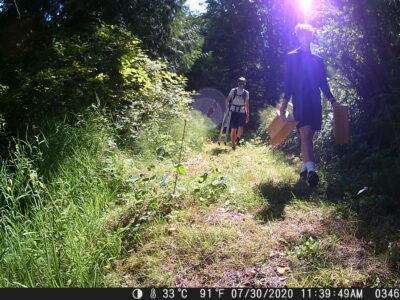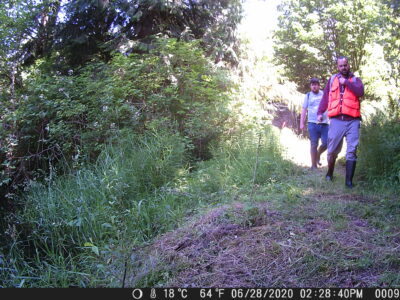When news of COVID-19 swept the nation early last spring, it marked the beginning of a period of drastic change in many of our daily lives. This was no exception for the staff of Great Peninsula Conservancy. Almost overnight, we transitioned to working from home. GPC’s Spring Dinner was postponed and eventually cancelled, as were our plans for GPC’s 2020 Walk and Talk series, our spring stewardship events, and the third year of our youth education program, NextGen Outdoor Camp. For staff that pride themselves on their adaptability and willingness to meet challenges head on, it was a hard realization that “business as usual” for GPC’s events and outreach just might not exist in 2020.
The idea to set up game cameras on GPC preserves originally stemmed from an effort to keep moving forward during the isolating months that would follow the COVID-19 shutdown. If we wouldn’t be able to bring our community members out to the land this year like we’d planned, then what could we do to make sure the stories of these amazing places still reached our friends and members?
This summer, the maintenance of two GPC game cameras represent the first step in what we hope will be an exciting future of education and outreach on GPC preserves through the new GPC Land Labs program. In the interim, we’ll keep you apprised of the comings and goings of our wild neighbors seen here. For the cast of animal characters we’ve gotten to know this summer, it seems that “business as usual” has, in fact, continued, and what a wonderful reminder that is!
Over the last twenty years, support for GPC’s work has resulted in the protection of tens of thousands of acres. Your support is also the reason that that the wildlife seen below still have room to roam, forage, and avoid conflicts with human development. From all of us, otters and eagles included, thank you!
Bald Eagle:
This bald eagle dropped down for a quick photo op by the preserve’s pond. Although the species are mainly fish eaters, they will also hunt small mammals and waterfowl. For this reason, they are most commonly spotted along coastlines, rivers, and lakes, but immature adults are known to wander, sometimes flying hundreds of miles in a day and winding up in unlikely places. The species is also known for its playful attitude, which may explain this visitor’s insta worthy close-ups. Whatever the reason, GPC staff are thrilled to see evidence of the wildlife that is supported by GPC’s protected landscapes.

River Otter and Pups:
We first met this female otter on July 10th. Since then, she’s checked in almost every two weeks without fail. Check the dates at the bottom of the pictures to see for yourself! According to the Washington Department of Fish and Wildlife, river otters tend to travel regular circuits, returning to favorite feeding grounds every one to four weeks. We’ll keep our eyes peeled for the return of this neighbor and keep you posted! Most recently, she’s been bringing her pups to pose for us!
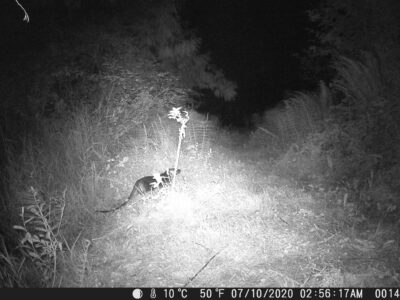

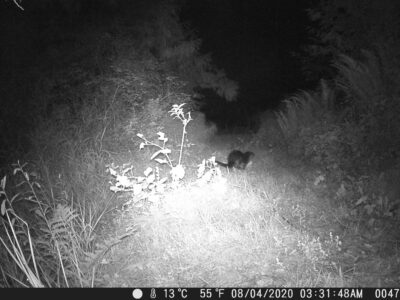
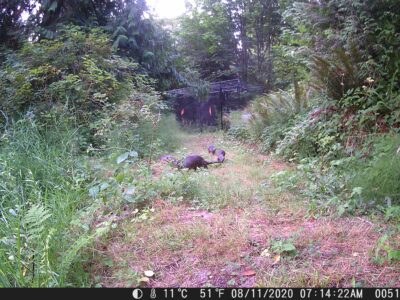
Coyote:
We think we’ve met this same coyote a few times throughout the summer, but weren’t sure at first if we’d spotted a fox. Our visitors don’t always show us their best angle… We think we’ve correctly identified this wild neighbor, but let us know what you think! Adult coyotes weigh 20 to 35 pounds, with males being slightly larger than females. At the shoulder, an adult male coyote is about 25 inches tall. The game cameras are placed strategically between a salmon bearing stream and a small pond. We know there’s lots of good eating in the area and it seems this opportunistic omnivore would agree!
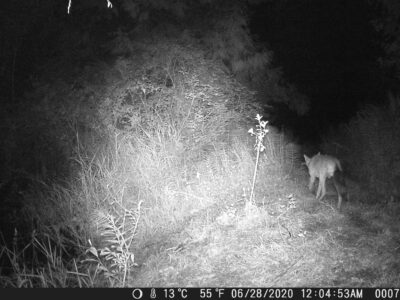
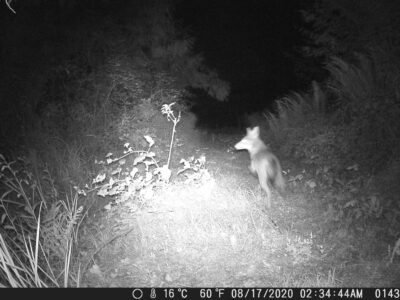
Black-Tail Deer:
Black-tailed deer occur from the crest of the Cascades west to the Washington coast, preferring brushy, logged lands and coniferous forests. Black-tailed deer normally reside within a one half to three square-mile area, so it makes sense that we’ve been seeing a lot of what we assume are the same few deer this summer. During early spring, they feed on Douglas fir, western red cedar, red huckleberry, salal, deer fern, and lichens. From late spring to fall, they consume grasses, blackberries, apples, fireweed, forbs, and salmonberry. Despite its irritant content, one of the plants that black-tail deer browse is western poison oak!
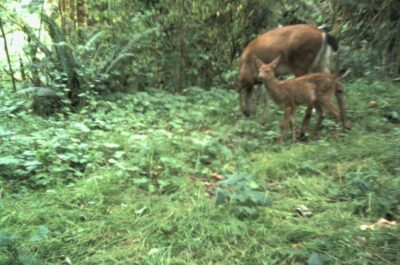
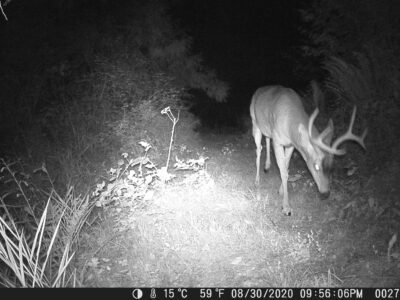
Two-legged Activity:
The GPC game cameras have also documented some of the human activity out on our preserves. Here you’ll see just a few of the volunteer stewards who have been helping us to maintain and restore this particular protected landscape.

